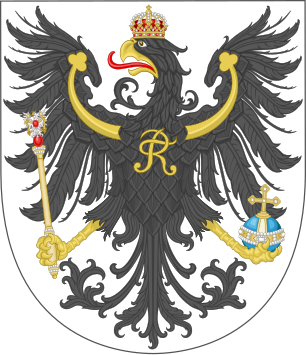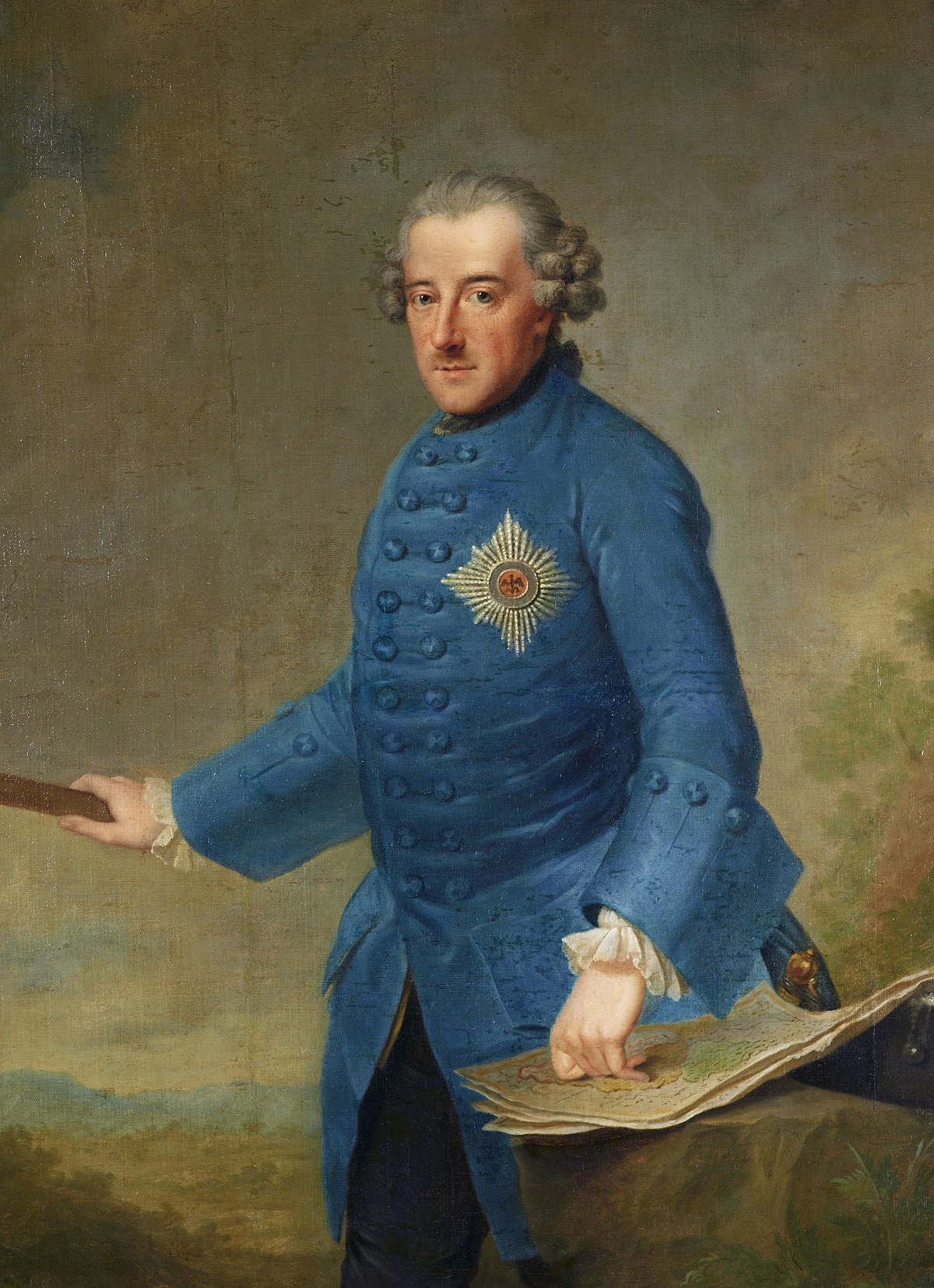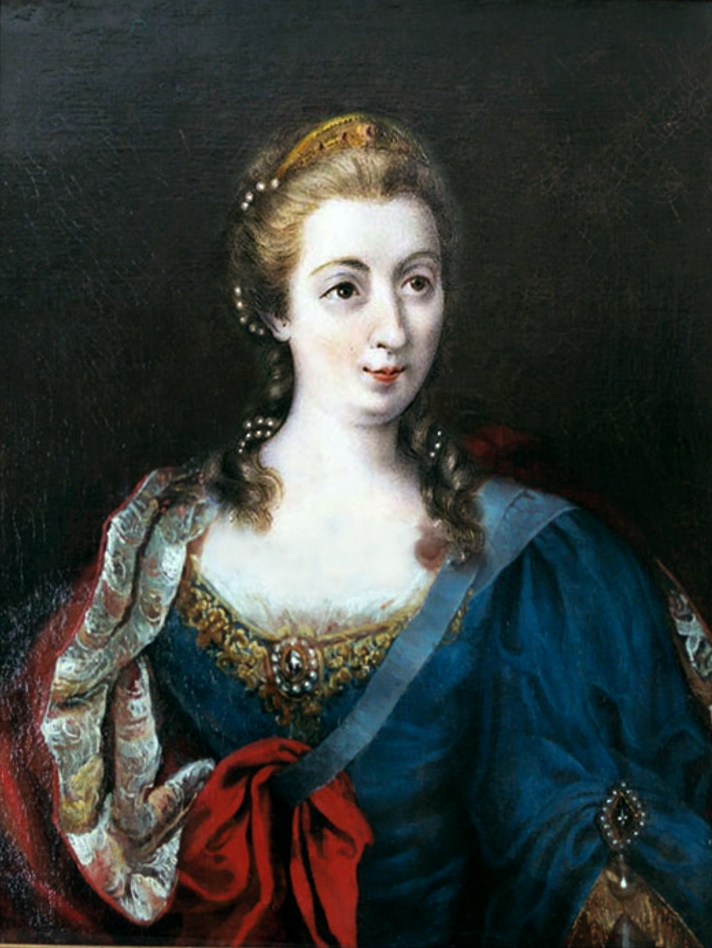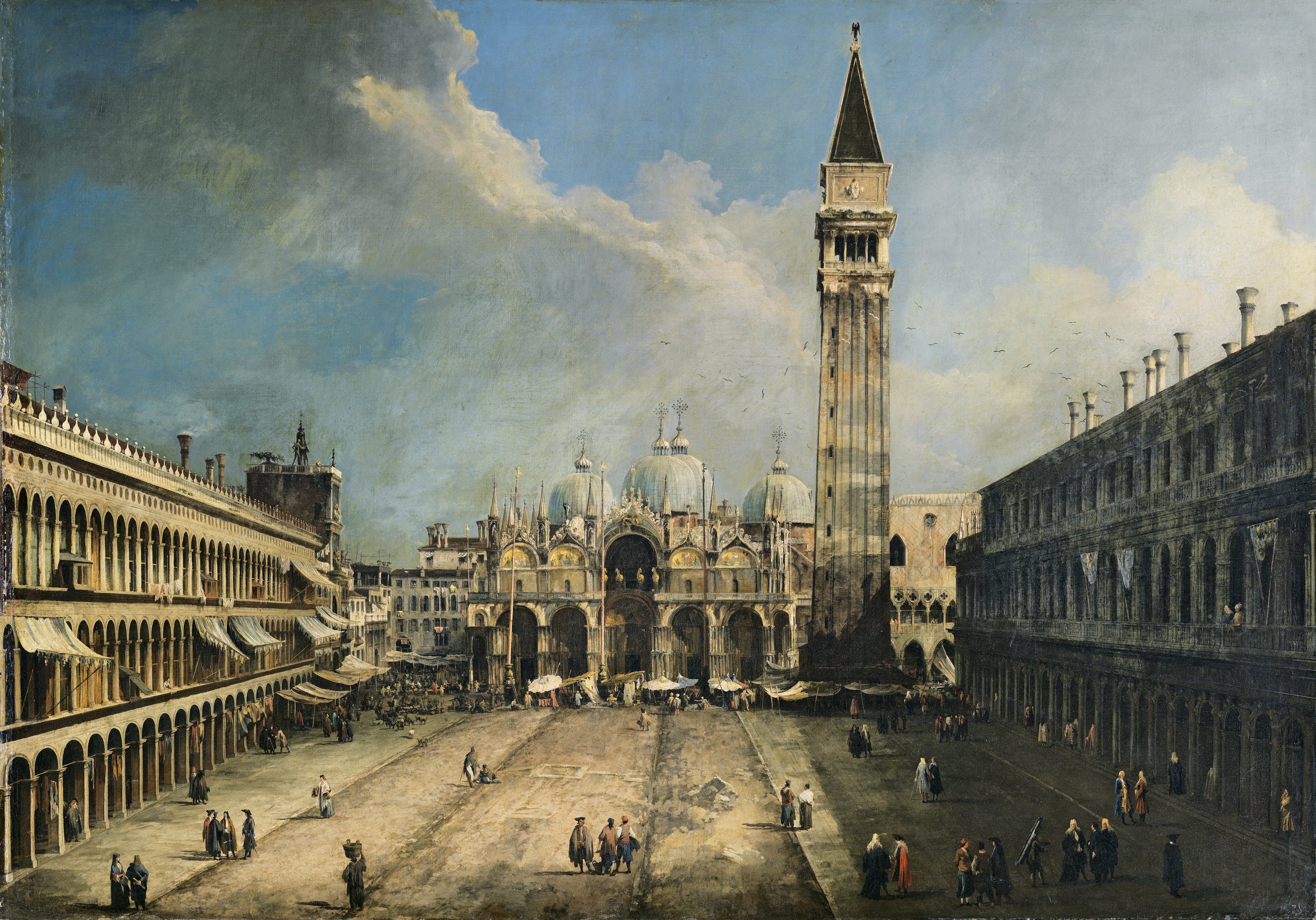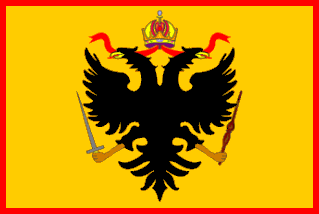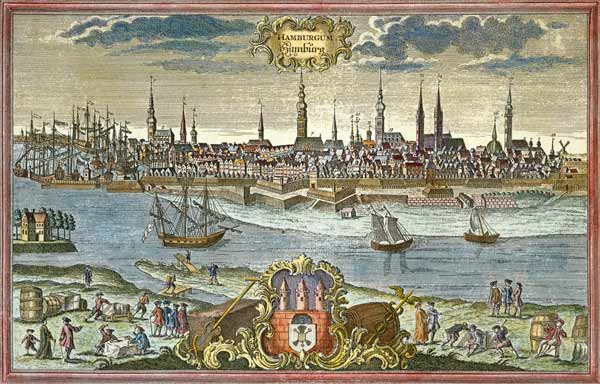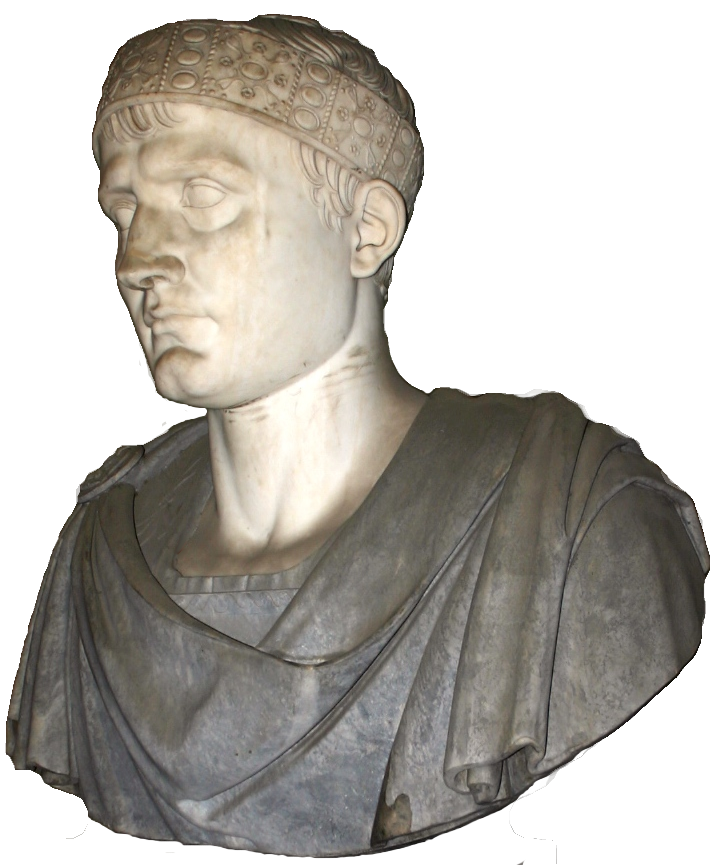- Location
- Brazil
1741 An Emperor Betrayed, Pt. IV:
Austria, Soy Yo

Austria, Soy Yo

Don Carlos did not wish to rule his Empire from Vienna, or Buda.
In fact he quite liked El Escorial.
Don Carlos did not wish to annex Austria and Hungary to Spain and risk war with Britain, France, Prussia and Bavaria, widespread rebellion and the further devastation of what hollow husk yet remained of the Holy Roman Empire.
In fact he quite liked peace. Peace allowed him to build, and reform, and restore, get richer and stronger.
War was expensive.
As such, to those who knew him the 1741 Hofburg Crisis was based on two fundamental misunderstandings regarding the character and mind of Don Carlos, to whit, (01) his willingness to deviate from tradition, primarily as personified in the figure of his namesake ancestor Karl V and (02) his willingness to resolve violently what he could otherwise resolve diplomatically.
The titular stickler was "Austro-Hungarian autonomy".
As far as Carlos was concerned, Austro-Hungarian autonomy had been a reality ever since the Armies of Flanders and Naples had descended upon Austria, Hungary and Bohemia and rid them of Emperor Heinrich VII's tonterias. The resulting 1731 Familienpakt between Don Carlos, Heinrich and Karl Albrecht of Belgium had put his conquests to paper and made them legally binding, with the end result that Carlos and his men went home and a Heinrich-free Austria was left to its own devices.
By the terms of the Pakt and with expressed Papal and international backing, Carlos had become Heinrich's fellow Emperor, sole regnant Archduke of the Erblande (Hereditary Lands, namely Austria and her dependencies) and Apostolic King of the Lands of the Crown of St. Stephen (Hungary, Croatia, Slavonia and their dependencies), informally known as Cisleithania and Transleithania respectively.
For his part Heinrich had received Bohemia back and kept Bavaria, the two cousins pledging to safeguard each other's territorial integrity.
In fact he quite liked El Escorial.
Don Carlos did not wish to annex Austria and Hungary to Spain and risk war with Britain, France, Prussia and Bavaria, widespread rebellion and the further devastation of what hollow husk yet remained of the Holy Roman Empire.
In fact he quite liked peace. Peace allowed him to build, and reform, and restore, get richer and stronger.
War was expensive.
As such, to those who knew him the 1741 Hofburg Crisis was based on two fundamental misunderstandings regarding the character and mind of Don Carlos, to whit, (01) his willingness to deviate from tradition, primarily as personified in the figure of his namesake ancestor Karl V and (02) his willingness to resolve violently what he could otherwise resolve diplomatically.
The titular stickler was "Austro-Hungarian autonomy".
As far as Carlos was concerned, Austro-Hungarian autonomy had been a reality ever since the Armies of Flanders and Naples had descended upon Austria, Hungary and Bohemia and rid them of Emperor Heinrich VII's tonterias. The resulting 1731 Familienpakt between Don Carlos, Heinrich and Karl Albrecht of Belgium had put his conquests to paper and made them legally binding, with the end result that Carlos and his men went home and a Heinrich-free Austria was left to its own devices.
By the terms of the Pakt and with expressed Papal and international backing, Carlos had become Heinrich's fellow Emperor, sole regnant Archduke of the Erblande (Hereditary Lands, namely Austria and her dependencies) and Apostolic King of the Lands of the Crown of St. Stephen (Hungary, Croatia, Slavonia and their dependencies), informally known as Cisleithania and Transleithania respectively.
For his part Heinrich had received Bohemia back and kept Bavaria, the two cousins pledging to safeguard each other's territorial integrity.
The Emperor would make concessions, while both the 'Kingdom' of Belgium and Bohemia would enter the Harmonious Union, the Emperor consented to Carlos III becoming Duke of the each of the Austrian Duchies and King of Hungary and Croatia, as well as Co-Emperor; An appointment that had the explicit blessing of the Pope. The Spanish Habsburgs, German Habsburgs, and Wittelsbachs would enter into a Familienpakt to defend the territorial integrity of each of their respective realms. (...) There would also be no more question of Spanish control over Austria and Hungary. These territories to which Carlos III formally organized as under a Palatine of Austria-Hungary governing from Vienna, who initially would be Prince Eugen of Savoy until a member of the Spanish Royal Family came of age. Bohemia would be returned to the Emperor's control, giving him a power base outside of the wreckage of Bavaria.
EVS: Eugénio von Savoia, as he signed his name.
Born 1663, he was 78 in 1741.
Prince Eugene of Savoy-Carignano, a Franco-Italian general, had been named Palatine of Hungary and Landespräsident (Governor General) of the Hereditary Lands. He was Don Carlos' third cousin (being a great-grandson of the Infanta Catalina Micaela of Spain) and had a storied history as a general fighting for Austria. In combination with the office of Hofkriegsratspräsidenten (President of the Imperial War Council) which he had held under Heinrich - and so succesfully used to coup him -, these titles gave him wide-ranging executive, administrative and military authority to govern Austria-Hungary as he saw fit.
Bar starting a pan-European war or leaving the Emperor-Archduke's name out of official documents, Eugene was free to do as he wished, how he wished.
Relations began to sour as the decade wore on, however.
There were two points of contention: (01) long-term concerns re: Austria-Hungary's future and (02) short-term concerns re: custody of the Archduke-Infantes, the senior line of Haus Hapsburg's next generation.
As he withered and aged, Prince Eugene's distrust of Don Carlos encouraged him to repeatedly and anxiously demand custody of at least one of Don Carlos' sons. His goal was to accomplish with a new Archduke what he had failed to do with his former pupil Heinrich. His anxiety naturally contaminated the military junta which ruled Austria-Hungary alongside him and had followed his lead in breaking with Henrich. Easily discernible was Eugene's desire - and tacit threat - to set up Carlos' own son as a rival and anti-King against him, should Carlos do anything other than follow Eugene's succession plans for Austria-Hungary and divy up his lands among his sons.
Prince Eugene did not hesitate to bluntly state: if raised by their father, in Spain, the Archduke-Infantes would be Spanish, not Austrian. How could they uphold and preserve the traditions of Austria if they were not Austrian? He, and the army, wanted an Austrian ruler in the Hofburg, and they wanted what they wanted now.
(Eugene himself, that King in everything but name, was French).
Don Carlos balked at such words. He was Austria. He was the very head of the domus Austriae, the House of Austria. The seniorat, the legacy, the name, the traditions... they were all his. Austria, soy yo. The traditions of Austria were the traditions of Spain. Not for nothing was the etiquette of the Viennese court rightly known as the Spanish cerimonial or court etiquette, brought there by Spanish infantas tracing back in a direct line to the Empress Maria (d. 1603) and through her back to Mary of Burgundy (d.1482). Mary of Burgundy had brought the trend-setting pageantry and protocol of the Burgundian Court to the Hapsburgs, who had imbued it with the Roman Catholic piety of the Most Catholic Monarchs and bred what became known as the pietas Austriaca or Habsburgica.
By this moral and religious code, the Hapsburgs were sacralized as agents of God on earth. The Jesuits historically helped support and develop the notion of the special religious and imperial mission of the Haus. This sacrosanct mission was expressed outwardly in the Spanish court etiquette, in everything from the many public feast days and pilgrimages to Mariazell, from the black Spanish court garb to the silence, reverence and propriety of Karl V's Castille, from the practice of kneeling before the Emperor and ensuring acess to him remained the privilege of a highly select few.
Accordingly, Eugene's reasoning for this novel demand - and novel it was, for nothing of the sort had been included in the original agreement - made Carlos take great offence and consider Eugene guilty of the highest treason. Carlos perceived himself under attack not only as a father, but as a patriarch and dynasty. What exactly did the general mean to insinuate?
Was he (Carlos) not Hapsburg enough, not Austrian enough, not traditionally-minded and Catholic enough, to ensure his sons ended up proper orthodox Hapsburgs and not whatever Heinrich had become?
Did the upjumped Frenchman in lifelong exile from his own home, pretend to have a better grasp of Carlos' ancestral fatherland and the Spanish court ceremonial, than Carlos himself?
And what of those pesky rumours which had plagued Prince Eugene since youth, his lack of a wife and the long-whispered depravity which had prevented him from acquiring a church benefice as a young man, even in the filthy halls of Sodom and Gomorrah, otherwise known in the French tongue as Versailles? Would it be fitting for the Restorer of Haus Hapsburg and Defensor Ecclesiae (Defender of the Church) to hand over his young and impressionable sons to a foreigner with a dodgy reputation for sexual immorality?
Between the Emperor-Archduke's self-image as a Hapsburg traditionalist and the Prince's self-image as a Kingmaker not to be questioned, there was little chance for an easy resolution of such prickly matters via courier, racing back and forth between El Escorial and the Hofburg.
Both sides thought the other ungrateful.
Both sides thought the other more than a little mad.
Bar starting a pan-European war or leaving the Emperor-Archduke's name out of official documents, Eugene was free to do as he wished, how he wished.
Relations began to sour as the decade wore on, however.
There were two points of contention: (01) long-term concerns re: Austria-Hungary's future and (02) short-term concerns re: custody of the Archduke-Infantes, the senior line of Haus Hapsburg's next generation.
As he withered and aged, Prince Eugene's distrust of Don Carlos encouraged him to repeatedly and anxiously demand custody of at least one of Don Carlos' sons. His goal was to accomplish with a new Archduke what he had failed to do with his former pupil Heinrich. His anxiety naturally contaminated the military junta which ruled Austria-Hungary alongside him and had followed his lead in breaking with Henrich. Easily discernible was Eugene's desire - and tacit threat - to set up Carlos' own son as a rival and anti-King against him, should Carlos do anything other than follow Eugene's succession plans for Austria-Hungary and divy up his lands among his sons.
Prince Eugene did not hesitate to bluntly state: if raised by their father, in Spain, the Archduke-Infantes would be Spanish, not Austrian. How could they uphold and preserve the traditions of Austria if they were not Austrian? He, and the army, wanted an Austrian ruler in the Hofburg, and they wanted what they wanted now.
(Eugene himself, that King in everything but name, was French).
Don Carlos balked at such words. He was Austria. He was the very head of the domus Austriae, the House of Austria. The seniorat, the legacy, the name, the traditions... they were all his. Austria, soy yo. The traditions of Austria were the traditions of Spain. Not for nothing was the etiquette of the Viennese court rightly known as the Spanish cerimonial or court etiquette, brought there by Spanish infantas tracing back in a direct line to the Empress Maria (d. 1603) and through her back to Mary of Burgundy (d.1482). Mary of Burgundy had brought the trend-setting pageantry and protocol of the Burgundian Court to the Hapsburgs, who had imbued it with the Roman Catholic piety of the Most Catholic Monarchs and bred what became known as the pietas Austriaca or Habsburgica.
By this moral and religious code, the Hapsburgs were sacralized as agents of God on earth. The Jesuits historically helped support and develop the notion of the special religious and imperial mission of the Haus. This sacrosanct mission was expressed outwardly in the Spanish court etiquette, in everything from the many public feast days and pilgrimages to Mariazell, from the black Spanish court garb to the silence, reverence and propriety of Karl V's Castille, from the practice of kneeling before the Emperor and ensuring acess to him remained the privilege of a highly select few.
Accordingly, Eugene's reasoning for this novel demand - and novel it was, for nothing of the sort had been included in the original agreement - made Carlos take great offence and consider Eugene guilty of the highest treason. Carlos perceived himself under attack not only as a father, but as a patriarch and dynasty. What exactly did the general mean to insinuate?
Was he (Carlos) not Hapsburg enough, not Austrian enough, not traditionally-minded and Catholic enough, to ensure his sons ended up proper orthodox Hapsburgs and not whatever Heinrich had become?
Did the upjumped Frenchman in lifelong exile from his own home, pretend to have a better grasp of Carlos' ancestral fatherland and the Spanish court ceremonial, than Carlos himself?
And what of those pesky rumours which had plagued Prince Eugene since youth, his lack of a wife and the long-whispered depravity which had prevented him from acquiring a church benefice as a young man, even in the filthy halls of Sodom and Gomorrah, otherwise known in the French tongue as Versailles? Would it be fitting for the Restorer of Haus Hapsburg and Defensor Ecclesiae (Defender of the Church) to hand over his young and impressionable sons to a foreigner with a dodgy reputation for sexual immorality?
Between the Emperor-Archduke's self-image as a Hapsburg traditionalist and the Prince's self-image as a Kingmaker not to be questioned, there was little chance for an easy resolution of such prickly matters via courier, racing back and forth between El Escorial and the Hofburg.
Both sides thought the other ungrateful.
Both sides thought the other more than a little mad.
***
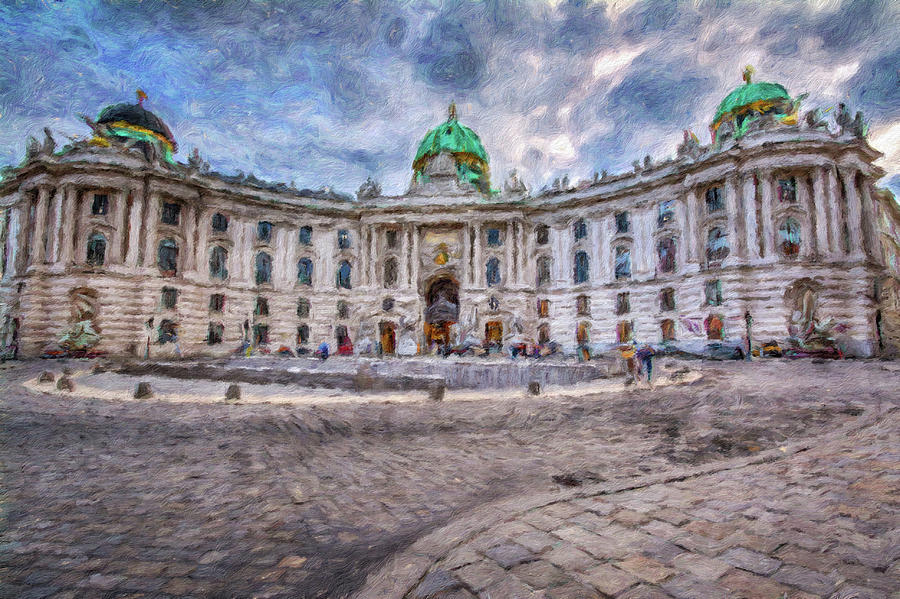
Hofburg ("Castle of the Court"), seat of the Dukes of Austria since the 13th century
***
Tensions in Austria escalated with the 1738 visit of the Spanish Queen Dowager. Don Carlos had sent his mother to shower Prince Eugene with honours and carry out an extensive survey of the lands. Carlos knew he had not been raised in the Hofburg and that much had changed under Otto and Heinrich: he wanted to know exactly what. He meant to rule well, while he ruled. He would not suffer his name to be a byline or footnote in the annals of Austria, a worry entirely separate to his successions plans, as far as Carlos was concerned. As the Spanish court ceremonial and pietas Austriaca had given way to Imperialism and then Byzantism, changes had been made to the government and military of Austria-Hungary - Carlos wanted to know which changes, exactly.
Prince Eugene and his junta interpreted this as absolute proof of untoward succession plans and a sure sign Carlos meant to annex Austria-Hungary. They accordingly responded with a series of hostile actions, including expelling the Queen Dowager (who was told in no uncertain terms they could not guarantee her safety if she stayed), fomenting or poorly containing rioting and producing a hitherto unheard-of rival pretender, promoted as Palatine of Hungary in Eugene's stead.
Karl of Koháry (or Don Carlos de Koháry, as the Spanish called him) was the name afforded this pretender. The boy had apparently been sequestered and secretly raised by Prince Eugene since birth or near enough. He was presented as the secret son of a secret liasion between the Emperor's foster-father and Prince-Regent and a lady of the Koháry family, lately raised to comital rank in 1685.
The best case scenario went that during his short reign as King of Hungary the elder of the three Carlos - then Karl III of Hungary - had made a secret, non-dynastic marriage to a woman of inexplicably low birth and begotten a son on her, all the while failing to notify his loving relatives and the wider world of European nobility. Such a move ensured his son's identity would always be (at absolute best) immensely questionable and highly suspect.
This failure was compounded by the failure to provide adequately for his only possible heir in any way, shape or form.
Prince Eugene and his junta interpreted this as absolute proof of untoward succession plans and a sure sign Carlos meant to annex Austria-Hungary. They accordingly responded with a series of hostile actions, including expelling the Queen Dowager (who was told in no uncertain terms they could not guarantee her safety if she stayed), fomenting or poorly containing rioting and producing a hitherto unheard-of rival pretender, promoted as Palatine of Hungary in Eugene's stead.
Karl of Koháry (or Don Carlos de Koháry, as the Spanish called him) was the name afforded this pretender. The boy had apparently been sequestered and secretly raised by Prince Eugene since birth or near enough. He was presented as the secret son of a secret liasion between the Emperor's foster-father and Prince-Regent and a lady of the Koháry family, lately raised to comital rank in 1685.
The best case scenario went that during his short reign as King of Hungary the elder of the three Carlos - then Karl III of Hungary - had made a secret, non-dynastic marriage to a woman of inexplicably low birth and begotten a son on her, all the while failing to notify his loving relatives and the wider world of European nobility. Such a move ensured his son's identity would always be (at absolute best) immensely questionable and highly suspect.
This failure was compounded by the failure to provide adequately for his only possible heir in any way, shape or form.
Otherwise, the child was a bastard or changeling, the prospect Don Carlos thought more likely from afar.
Word went the lad had extensive estates in Hungary derived from the Koháry family. Since female succession was not the norm in Hungary and required explicit royal approval (the prefection of female heirs by an exclusive royal prerogative), such lands could not have been inherited: and what vast inheritance was this that took place without anyone noting? Such a state of affairs would have required extensive corruption in order to be hidden successfully for so long from the Emperor-Archduke, his officers and the outside world.
No wonder Eugene had exploded at the idea of a national survey.
As far as Don Carlos was concerned, secret royalty was nonsense. Royalty was public business and he knew his uncle Karl better than anyone - better than Eugene, better than madame Koháry, better than anyone - to believe this story as Eugene related it to him.

Don Carlos de Kohary, named Palatine of Hungary 1740
***
Don Carlos had been a babe at the breast when his unlikely and ever-sickly father, Don Carlos II, passed away.
The death of the Betwiched King (El Hechizado) of Spain might very well have represented a break in Hapsburg tradition had it not been for the conversion and Castillian indoctrination his third bride had been submitted to, assuring Don Carlos III was conceived and suckled at the breast of pietas Austriaca. The arrival in Spain of the archduke Karl, reborn as the Prince-Regent Don Carlos, had reinvigorated the Spanish court and fanned the sombre flames of the pietas austriaca all through the early days of Don Carlos III.
Indeed, many would consider Don Carlos' fixation on the Italian Rinascimento - corpulent, sensual, shining, golden - and lifelong concern with Imperial affairs as derivatives of the upbringing the Prince-Regent had given him. He was Karl V come again, the shining center of Christian empire, guardian of the Res Publica Christiana and defender of the Church. Not even the gates of hell could prevail against him.
And thus Don Carlos braced himself for what lay ahead, leaving beind Finale Ligure, Genoa and Parma to make his return home: yes, home, his eastern, ancestral home, the Hofburg. Desirous of diffusing the situation, getting his sons married and arranging a happy future for his House, Don Carlos set out for the Hofburg, ready to show the Imperial War Council his quality and worth - once again.

